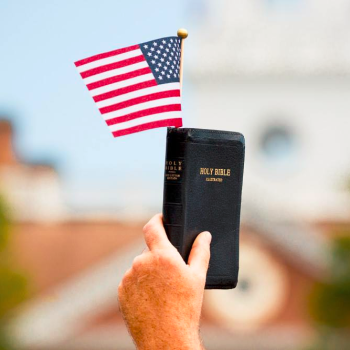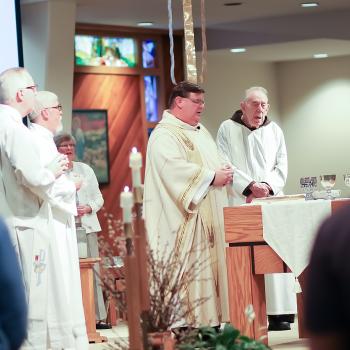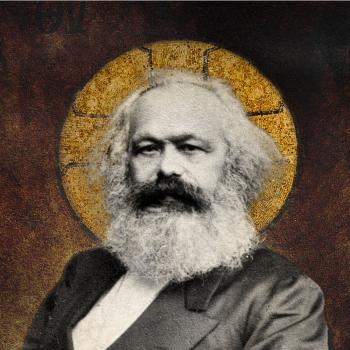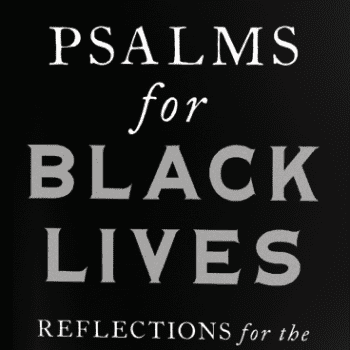Act Two: Jesus prayed in a certain way
As I read on in the text I noticed that Jesus offers the pattern of the Lord’s Prayer. Though I have read this prayer many times, and read many commentary entries explicating its various clauses, this time was different. This time, in reading it, something hit me at an emotional, not just an intellectual level. It will probably sound quite obvious to you, but here it is. The Lord’s Prayer reflects the pattern of Jesus’ own life of prayer with God. This prayer is an invitation to us into that prayer life that the Son of God shares with God the Creator.
I started thinking about the request “Teach us to pray.” I started wondering how people who were the top talents in their field learned to do what they do. Somebody must have got them started.
I typed questions into my web browser. “Who taught Elvis Presley to play the guitar? Who taught Babe Ruth to hit? Who taught Marian Anderson to sing?”
Elvis’ minister at The First Assembly of God Church in East Tupelo, Mississippi, Brother Frank Smith, taught Elvis how to make a D chord, an A chord and an E chord, all he needed to play ‘Ole Shep.’
From the age of 7-19, baseball great “Babe” Ruth lived at an orphanage in Baltimore, Maryland called St. Mary’s Industrial School for Boys. A priest at the school, Brother Matthias Boutlier, first introduced Ruth to the game of baseball. He became a father figure in Ruth’s life, teaching him how to read and write, and worked with Ruth on hitting, fielding and as his skills progressed, pitching.
Marian Anderson, (1897-1993), American contralto and one of the most celebrated singers of the twentieth century, credited her Aunt Mary with encouraging her to sing. Both Marian’s parents were devout Christians and the whole family was highly active in the Union Baptist Church in South Philadelphia. Marian’s Aunt Mary was particularly active in the church’s musical life and, noticing her niece’s talent, convinced her to join the junior church choir at the age of six. As a part of the choir she got to perform solos and duets, often with Aunt Mary who also had a fine voice. Marian was also taken by her aunt to concerts at local churches, the YMCA, and other community music events throughout the city. Anderson credited her aunt’s influence as the reason she pursued a singing career.
Since I was on a roll, I typed in “Who taught Jesus to pray?” The Wiki Answer page popped up. The answer to the question was “Jesus was God in human form. He already knew how to pray.”
Then he would seem to be the perfect authority to whom to go! The disciples made a good call to consult with him.
Luke’s form of the Lord’s Prayer is shorter than Matthew’s. They may both originate from the Q source, but the congregation probably won’t be interested in a 10 minute debate about this. They’d be more nourished by learning that Jesus prayed in a certain way that is a model for our praying.
- Jesus prayed in an intimate way
Luke begins “Father,” rather than Matthew’s more formal “Our Father in heaven.”
This reflects the Palestinian custom of addressing a parent in a family setting directly and is a more personal, intimate form of address. Viewing God as father is certainly present in the Hebrew Scriptures (Exodus 4:22-23; Hosea 11:1). Jesus made it a central emphasis in his prayer life with God. (Into God’s Presence, 140) “Jesus was saying ‘father’ to God in an unusual and startlingly intimate way. For the early Christians, saying ‘Father’ in prayer was more than simply repeating the word after Jesus. It took them to the very heart of …Jesus’ own awareness of God.” (Tinsley 124)
- Jesus prayed in a reverent way
“Hallowed be your name:”
The theme of the hallowing of God’s name is prominent in Jewish Kaddish prayers. Kaddish is from an Aramaic word meaning ‘holy.’ A Kaddish is a responsive prayer that takes many forms in Jewish worship. It often includes these words “Exalted and hallowed be his great name in the world which he created according to his will.” (Marshall 457)
The name of a person in the Hebrew Scriptures meant far more than just a label. It connoted their character, family background, social status, race, and nationality. So with God, God’s name conveys God’s character and mystery and activity in the history and experience of the Jewish people. To hallow God’s name is to show reverence to all God is, has done, does, and promises to do. This reverence is the background for Jesus’ objection to being called good (18:19) “Why do you call me good? No one is good but God alone,” and his objection to swearing (Mt 5:33-37). (Tinsley 124)
“Hallowed be your name” involves a petition to God to act to bring about a situation in which people will reverence God’s name and regard it as holy as well as an exhortation to the one praying to honor God’s holiness (Isaiah 8:13; 29:23; Ezekiel 36:36) (Marshall, 457)
- Jesus prayed in an urgent way
“Your kingdom come”
This theme also appears in Kaddish prayers: “May he let his kingdom rule in your lifetime and in your days and in the lifetime of the whole house of Israel speedily and soon.”(Marshall 457)
To pray this phrase is not just to recite words, but to invoke the presence and power of God as the one praying seeks to be an agent of bringing God’s kingdom to bear in daily life.
Jesus was convinced that the kingdom of God had been inaugurated in his teachings, healings, exorcisms, and miracles. “If it is by the power of God that I cast out the demons, then the kingdom of God has come to you”(11:20). To pray “your kingdom come” is to put ourselves at the service of the promised reign of God.
Act Three: Jesus Prayed with Certain Faith
I would never start a sermon with “Webster’s dictionary defines the word ‘certain’ as….” That’s too boring and predictable. Like the opening of a high school public speaking assignment.
But I do look words up in my online dictionary/thesaurus to get the nuances that can shape the theme of a sermon. In this case, I found that ‘certain’ derives from the Latin certus, to determine.
The variety of words that can render the nuances of certain caused that “I think this will preach” hair standing up on the back of the neck for me. “Dependable. Definite. Fixed. Inescapable. Sure to come or happen. Inevitable. To be relied upon. Assured. Confident.”
The final three petitions of Luke’s version of the Lord’s Prayer convey Jesus’ certain faith in God’s promises.
“Give us each day our daily bread. “ This phrase draws on the imagery of manna in the wilderness which was gathered each day and was sufficient for that day. It evokes images of Jesus’ own feeding of the multitudes and his experience of God’s Word feeding him so that he didn’t need to turn stones into loaves when tempted to do so by Satan. We can pray with certain faith that God will provide for our daily needs.
“Forgive us our sins, for we ourselves forgive everyone indebted to us. “ We are to live and pray seeking to model our lives on Jesus’ treatment of those who wronged him, as it partakes of the forgiving character of God.
“And do not bring us to the time of trial.” This phrase carries the double meaning of strengthening us to avoid temptation and sustaining us in unavoidable hardships.
- Jesus prays in a certain place.
- He prays in a certain way, a way that is intimate, respectful of God’s holiness, and urgent.
- He prays with a certain faith, that God will provide for his children’s needs, that God will forgive our transgressions and that God will strengthen us in times of temptation and hardship.
Alyce McKenzie is Professor of Homiletics at Perkins School of Theology, Southern Methodist University.
Works Cited
Into God’s Presence:Prayer in the New Testament, edited by Richard N. Longenecker, Chapter 7, “The Lord’s Prayer as a Paradigm of Christian Prayer,” N.T. Wright (William B. Eerdmans Publishing Company, 2001)
I. Howard Marshall, The New International Greek Testament Commentary Commentary on Luke (William B. Eerdmans Publishing Company, 1978).
E.J.Tinsley, The Cambridge Bible Commentary on the New English Bible (Cambridge University Press, 1981).
















